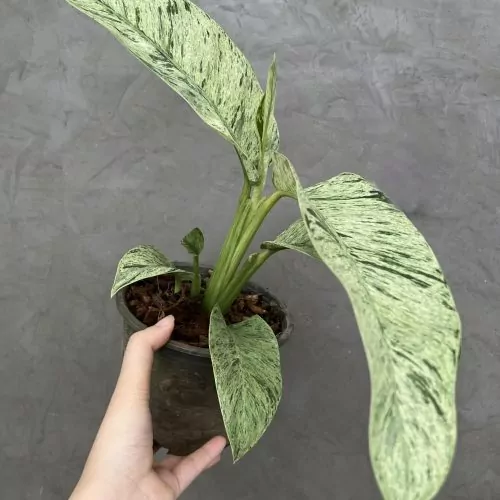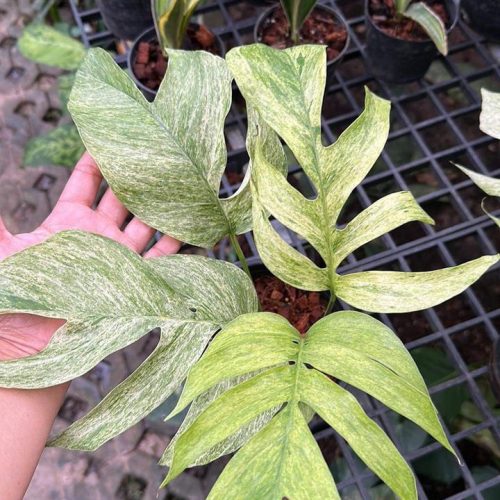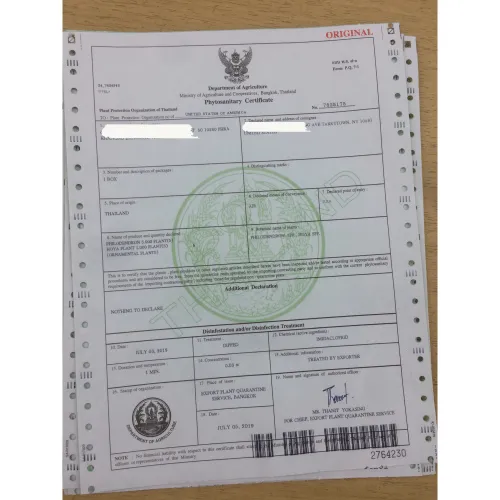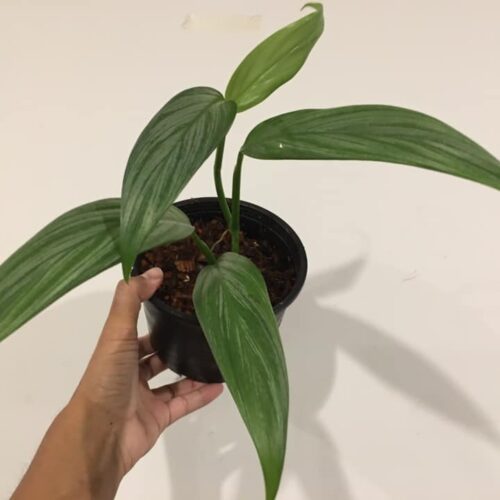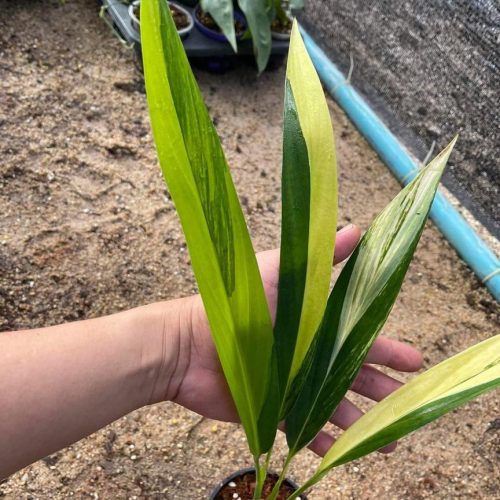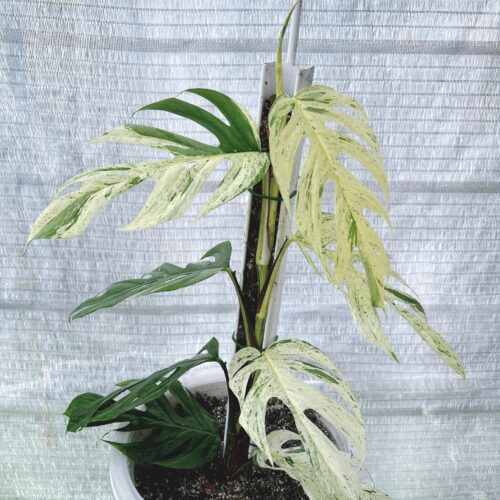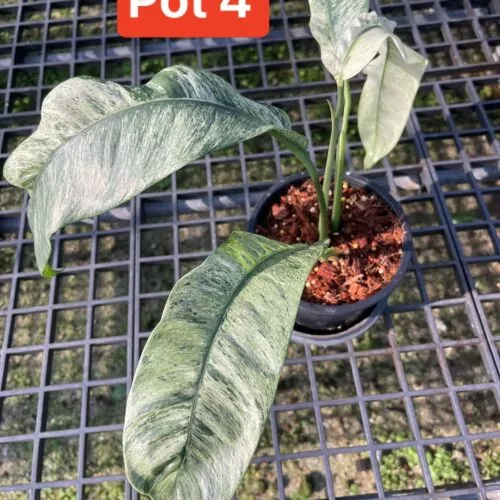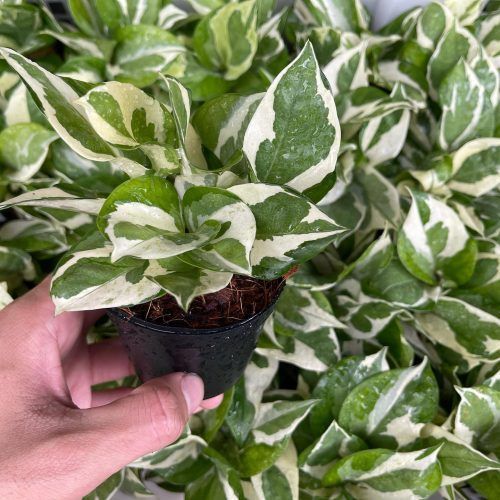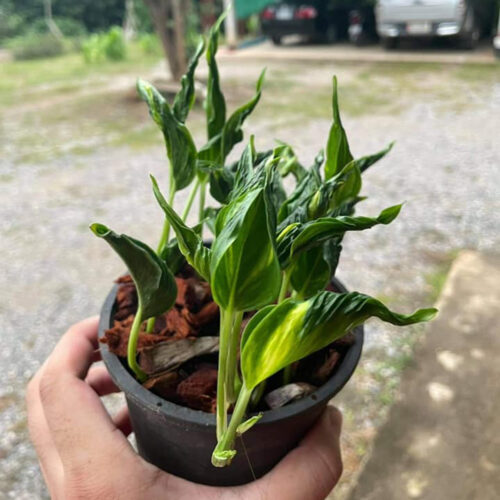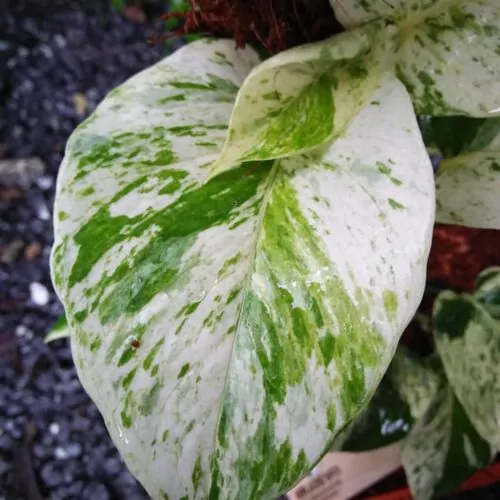Epipremnum Manjula is a climbing vine in the arum family that is known for its striking variegated foliage. This tropical indoor plant is treasured by houseplant enthusiasts and collectors for its unique patterning and dramatic appearance.
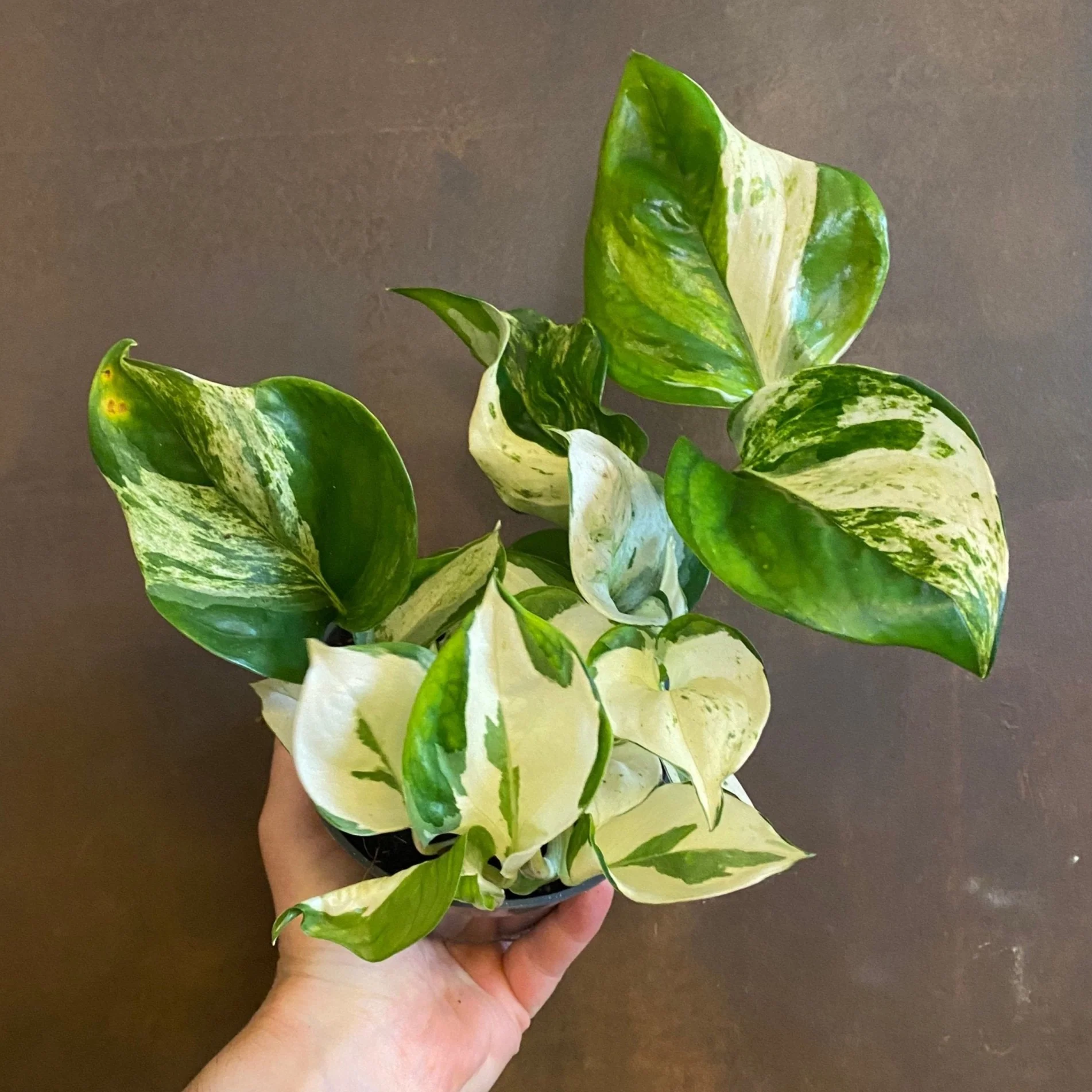
Physical Characteristics
Epipremnum Manjula is a fairly vigorous vine that can reach lengths of 10 feet or more given proper support. Its stems are green and semi-woody. The Manjula’s leaves emerge a solid green color and then begin to develop splotches and spots of light green, yellow, and white as they mature.
Leaf Shape and Size
The leaves of Epipremnum Manjula are heart-shaped with a tapered point. They typically measure around 4-8 inches long and 3-5 inches wide when fully mature. The leaves start off smaller and then reach their full size as the plant matures over a few years.
Variegation Patterns
No two Epipremnum Manjula leaves have exactly the same variegation pattern. The spots and splashes occur in unique and random designs. Some leaves may just have a few speckles while others have large sections of yellow or white. This diversity in patterning makes each Manjula plant truly one-of-a-kind.
For those interested in discovering more about the fascinating world of variegated plants, the “5 Stunning Epipremnum Varieties: A Must-See Guide!“ offers an in-depth look at the different types of Epipremnum, each with their unique variegation.
Growing Conditions
Epipremnum Manjula thrives under the warm, humid, indirect light conditions found in most homes. It enjoys consistent moisture and humid air. With the right care, this plant will cascade beautifully in hanging baskets or climb up supports.
Light Requirements
The Manjula plant prefers bright, indirect light. Some morning or late afternoon sun is tolerated but be cautious of prolonged direct light which can scorch the foliage. Bright shade suits it best – near a window filtered by sheer curtains is ideal.
Water and Humidity Preferences
Keep the soil moist year-round without oversaturating it. Allow it to almost dry out only slightly between waterings. Mist the plant daily or place its pot on a pebble tray to boost ambient humidity around it. Average room humidity suits this plant nicely.
Temperature Needs
Normal household temperatures between 60°F to 80°F are perfectly suitable for Epipremnum Manjula. Avoid exposing it to cold drafts which can shock the plant. If cooler than 60°F, use a portable heater nearby.
To ensure you’re providing the optimal environment for your Manjula, or any other Epipremnum variety, don’t miss out on the insights shared in “5 Essential Tips for Thriving Epipremnum Indoors & Outdoors“. This guide covers everything from light requirements to temperature control, crucial for maintaining healthy Epipremnum plants.
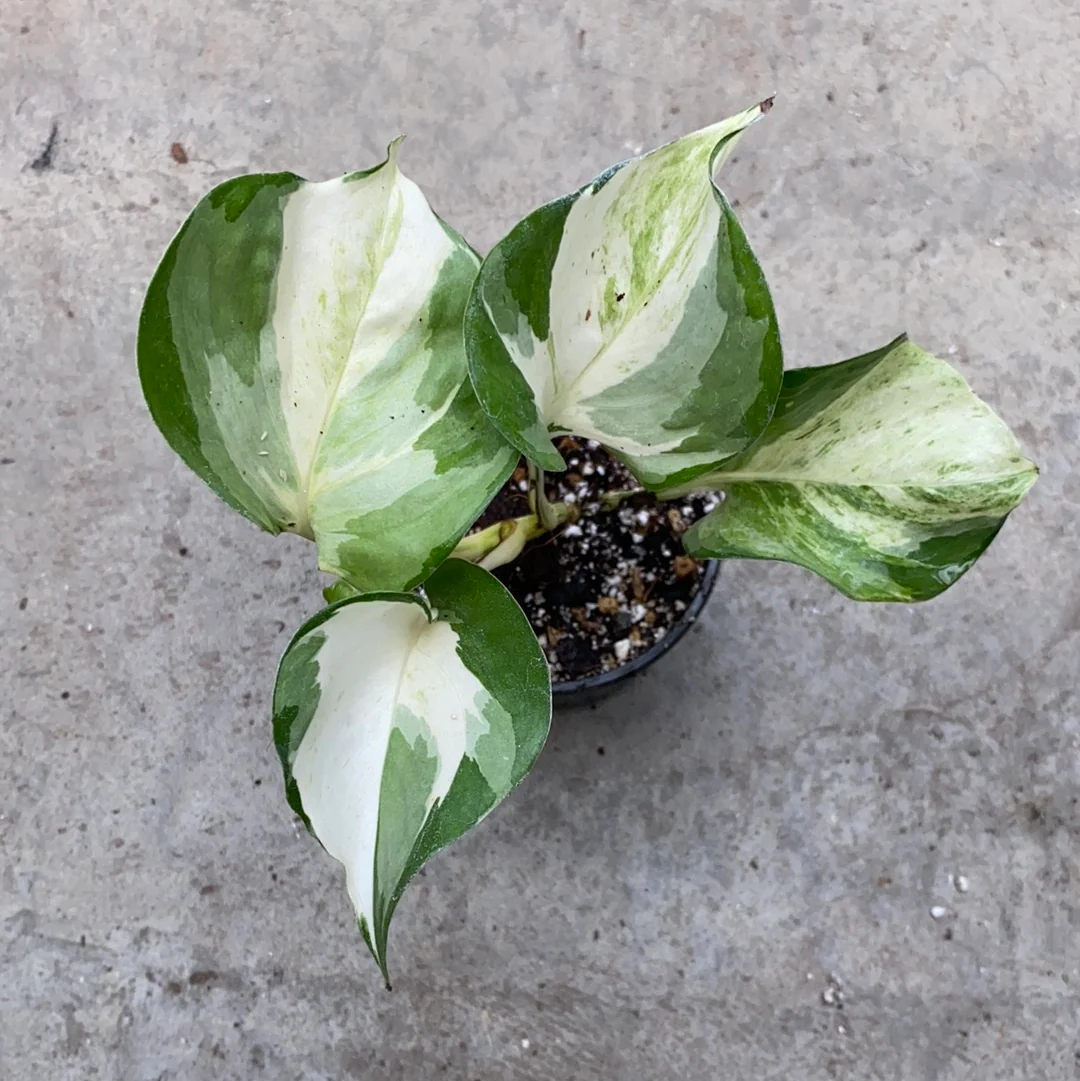
“Discover the unique charm of the Epipremnum Manjula – a must-have for plant enthusiasts! Click here to bring this stunning addition to your home today!”
Care and Maintenance
Caring for Epipremnum Manjula mainly involves providing adequate bright, indirect light, frequent watering and misting, and occasional fertilization and pruning. Repotting every few years in fresh potting mix will refresh the roots.
Watering Frequency
Check the soil moisture at least weekly, watering whenever the top inch becomes dry. More frequent watering may be needed in warmer weather when the plant is actively growing. Never allow the soil to fully dry out for extended periods.
Fertilizer Recommendations
Use a balanced liquid houseplant fertilizer diluted to half-strength every 2-4 weeks during the spring and summer growing season. Discontinue fertilizer over the fall and winter when growth slows.
Pruning Guidance
Trim off any dead or damaged leaves at the base of the stem. Prune back overlong trailing stems or leggy vines to shape the plant as desired. Pruning triggers bushier regrowth.
For a comprehensive guide on how to keep your Epipremnum lush and healthy, be sure to read “5 Easy Steps to Lush Epipremnum Growth: Master Pothos Care Today!“. This article offers valuable tips on watering frequency, fertilizer recommendations, and pruning guidance, tailored for Epipremnum plants.
Interesting Facts
Epipremnum Manjula is a patented hybrid cultivar that originated around 2006 at Equatorial Plant Company in Malaysia. It arose spontaneously as a mutation of the popular Epipremnum ‘Marble Queen’.
The name “Manjula” honors Dr. Manjula Paliyath, a respected Canadian plant scientist. This striking plant shares her name and joins dozens of other gorgeous houseplants developed byEquatorial.
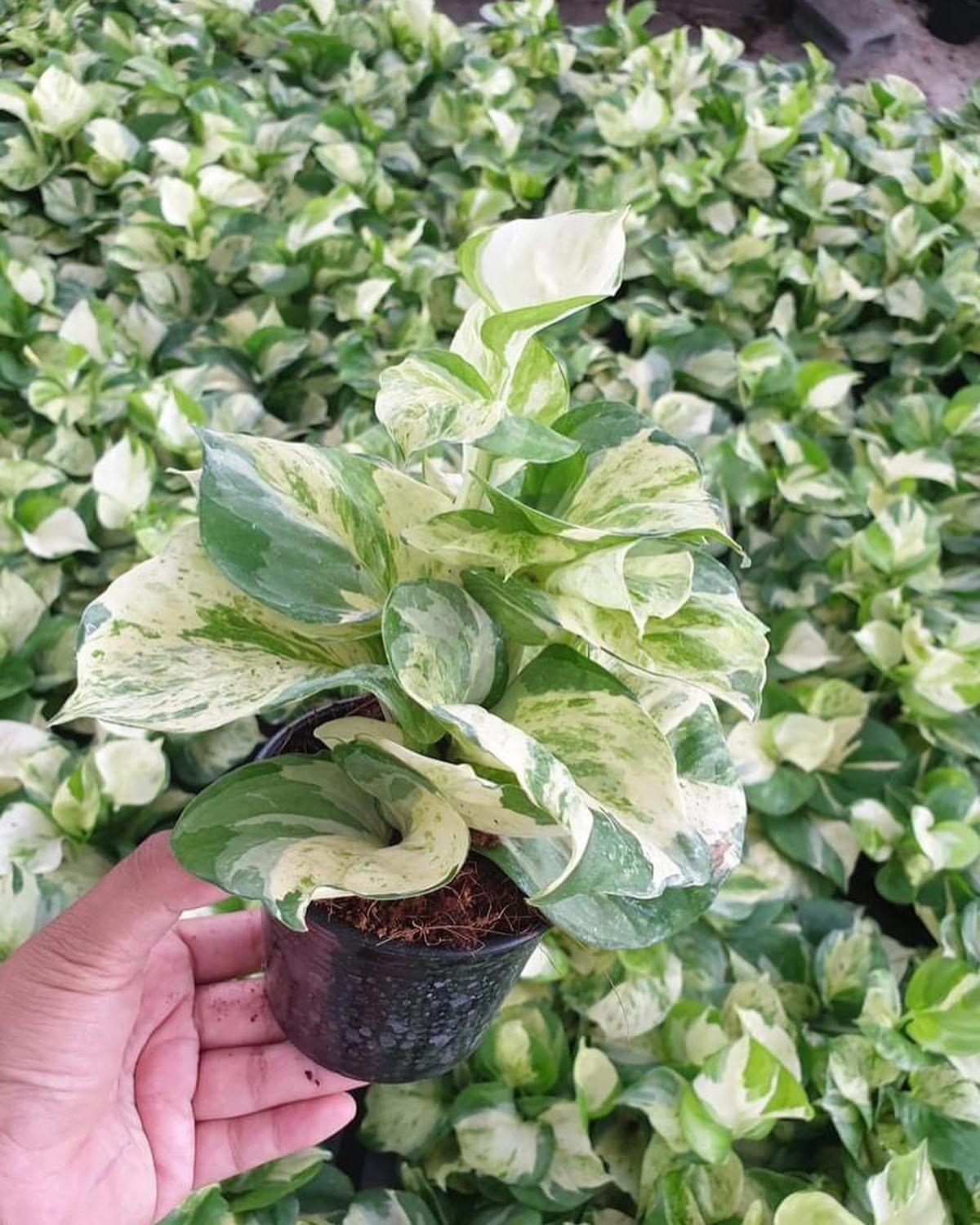
Where to buy Epipremnum Manjulao? Benefits from importing plants from Thailand
- Shipping: Door to door shipping, fast and safe with Dragon Courier
- Biodiversity: Thailand is known for its rich biodiversity, including a wide variety of aroid species. This diversity allows importers to access a broad range of unique and exotic aroid plants.
- Quality and Health of Plants: The suitable climate helps the plants grown here stay healthy and of high quality.
- Cost-Effectiveness: Due to favorable growing conditions and efficient production methods, Thai aroid plants can often be more cost-effective compared to those from other countries.
- Access to Hybrid Varieties: Thai growers are often involved in the development of new hybrid aroid varieties, offering unique plants that may not be available from other sources.
Epipremnum species are the most sought after by aroid plant lovers
Conclusion
With its large, dramatically variegated leaves that no two alike, Epipremnum Manjula adds incredible visual interest wherever it grows. Caring for this tropical foliage plant is quite straightforward when given appropriate moisture, humidity, light conditions, and care. Display it in hanging baskets or let it vine up a moss pole to show off its one-of-a-kind checkerboard patterning and colors. The Manjula plant makes a uniquely beautiful addition indoors.
FAQs
- What is the optimal temperature for Epipremnum Manjula?
Ideally, it prefers temperatures between 65°F and 85°F. - Can Epipremnum Manjula survive low light conditions?
While it can tolerate low light, its variegation may fade. Bright, indirect light is best. - How often should I water my Epipremnum Manjula?
Water when the top inch of the soil feels dry. Overwatering can lead to root rot. - What should I do if my Epipremnum Manjula’s leaves are turning yellow?
Yellow leaves often suggest overwatering or insufficient light. Adjust these conditions as needed. - Can Epipremnum Manjula grow outdoors?
Yes, but it thrives best in tropical climates and should be protected from frost and extreme heat.


